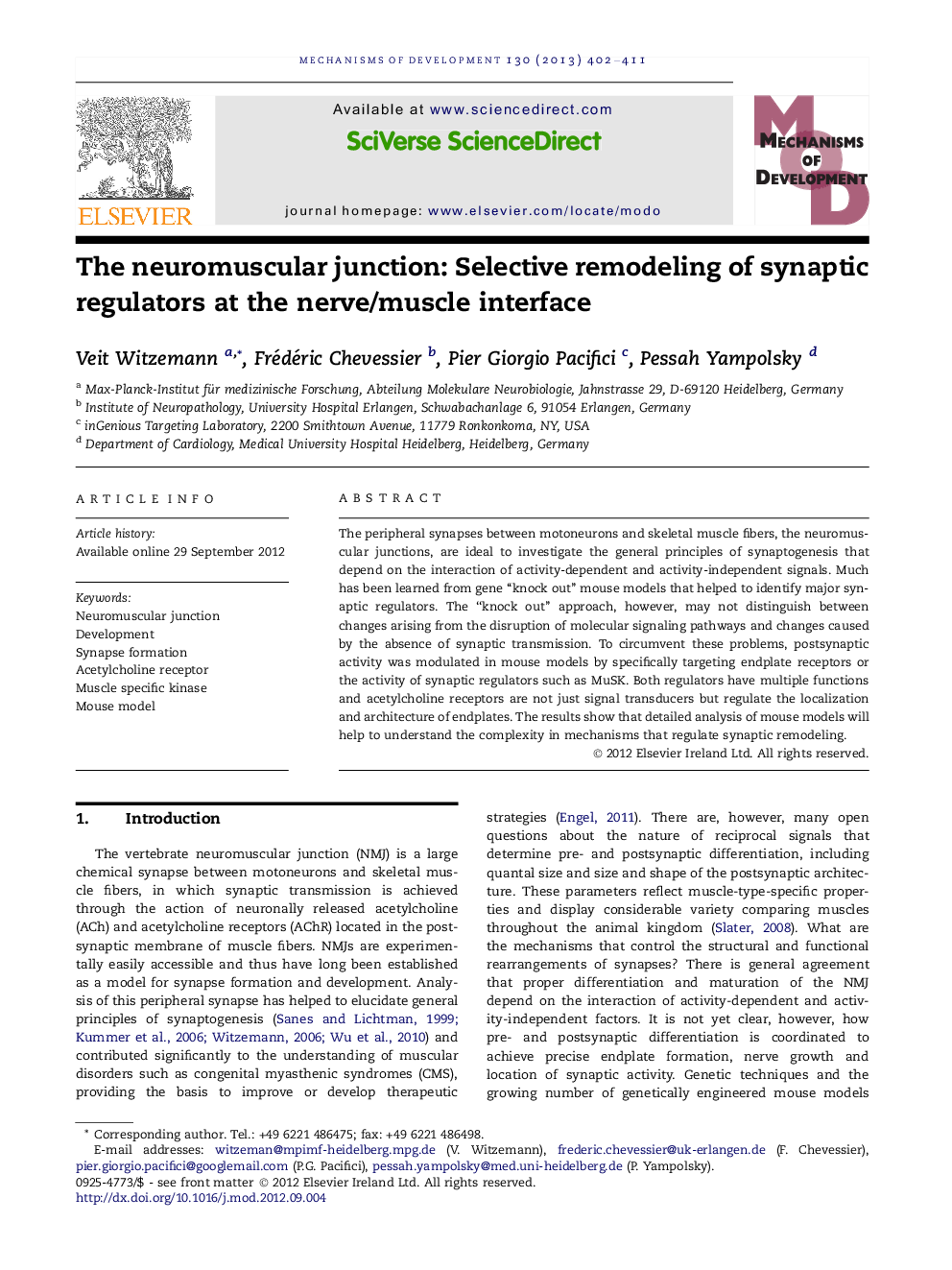| Article ID | Journal | Published Year | Pages | File Type |
|---|---|---|---|---|
| 2194640 | Mechanisms of Development | 2013 | 10 Pages |
The peripheral synapses between motoneurons and skeletal muscle fibers, the neuromuscular junctions, are ideal to investigate the general principles of synaptogenesis that depend on the interaction of activity-dependent and activity-independent signals. Much has been learned from gene “knock out” mouse models that helped to identify major synaptic regulators. The “knock out” approach, however, may not distinguish between changes arising from the disruption of molecular signaling pathways and changes caused by the absence of synaptic transmission. To circumvent these problems, postsynaptic activity was modulated in mouse models by specifically targeting endplate receptors or the activity of synaptic regulators such as MuSK. Both regulators have multiple functions and acetylcholine receptors are not just signal transducers but regulate the localization and architecture of endplates. The results show that detailed analysis of mouse models will help to understand the complexity in mechanisms that regulate synaptic remodeling.
► Targeting of synaptic regulators (AChR, MuSK) by homolgous recombination. ► Modulation of AChR function deciphers AChR-dependent processes in synaptogenesis. ► GFP-labeled AChR identify molecular changes at synapses in vivo. ► Novel time-lapse imaging technique reveals channel conversion at endplates in vivo.
